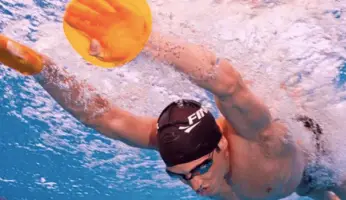The Types of Skiing
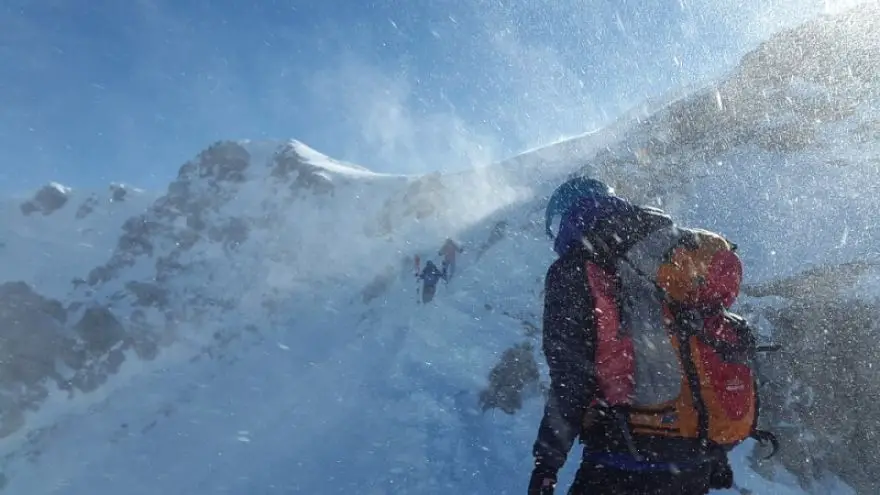 The Types of Skiing
gearweare.net
The Types of Skiing
gearweare.net
Although the principles of skiing always remain the same, there are multiple types of skiing which one can choose to participate in. These different styles have to do with the terrain that a skier chooses to shred and the types of gear they choose to use while they are out there. These styles are distinct and quite different so that every type of skier is sure to find a style of skiing that fits them perfectly. However, there is some crossover between these different styles, so that one skier can easily specialize in multiple types.
Table of Contents
Downhill Skiing
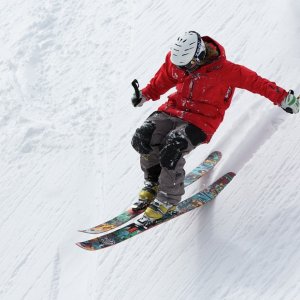
Downhill skiing is the type of skiing that the majority of people are most familiar with. Also known as alpine skiing, ski resorts are the home to downhill skiing. At these resorts, visitors are able to ride chairlifts to the top of the mountain and then ski down without having to make any upward movement using their own two feet, which has given rise to the name of this style of skiing.
The runs at ski resorts are a great place to learn to ski since many of them are groomed and they can be found at a variety of skill levels. Furthermore, the controlled environment of a resorts makes it easy to plan one’s route down the mountain so that one can be sure they won’t find themselves on terrain that is too difficult for them. Those looking for a challenge can also find this while downhill skiing. Many big mountains have steep terrain and some have back bowls that never get groomed. Trees are other places on a resort where one can find a greater challenge, and, if they’re lucky, powder stashes.
The gear used for downhill skiing includes plastic boots and bindings that keep both the toe and the heel locked in place. In the case of a fall, the bindings are designed to release to mitigate the chances of injury. The skis themselves come in a wide variety of styles which are dependent on the type of snow and terrain the skier prefers. Whichever ski is chosen though, the epitome of proper form in downhill skiing is the parallel turn.
Backcountry Skiing
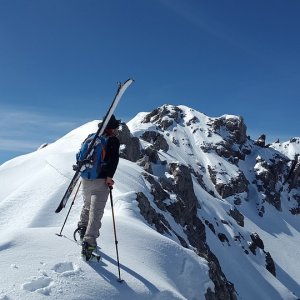
This type of skiing encompasses any pursuit of this sport that takes place outside of the confines of a resort. Because backcountry skiing typically requires practitioners to get to the top of a run by their own volition, it is possible for backcountry skiers to actually ski up-hill. To accomplish this skins, which when attached to skis prevent them from sliding backward, and bindings that allow the heel to be lifted are used. Some skiers also choose to hike, with their skis attached to their backpack.
The terrain that backcountry skiers explore is not maintained, meaning that avalanches and other obstacles such as rocks and crevasses are real dangers for practitioners of this type of skiing. All those who head to the backcountry should be trained in avalanche rescue and be carrying a beacon, shovel, and probe. Due to the variable nature of the terrain, only expert skiers should attempt to get into backcountry skiing.
Those who want to backcountry ski but don’t want to do the long slog uphill can access backcountry from the tops of some ski resorts. Backcountry that is accessible via a chairlift is called side-county. Snowcat tours and heli-skiing are other options, although these might be quite expensive.
Alpine Touring
This style of skiing is really a style binding, which has settings that allow the skier’s heel to be both loose and connected. This is perfect for backcountry ascents which the skier wishes to descend in alpine style. This type of skiing is also known as AT or randomness, which means hiking in French.
Telemark Skiing
When telemark skiing there is no way to attach the heel to the binding. This allows for the easy ascension of hills when these skis are used with skins, but means that skiers must use a completely different technique on the descent than that used when alpine skiing. The technique involves lifting the back heel and pivoting the back leg, while the front knee moves into a 90-degree angle. Essentially, the skier is lunging as they move down the hill.
Ski Racing
Ski racing is a popular competitive aspect of skiing. The types of ski races are divided in the four disciplines of slalom, giant slalom (GS), super giant slalom (super G), and downhill, all of which occur within the controlled environment of a resort. These events are very precise, and skiers who dedicate themselves to racing do the same courses over and over again in an attempt to perfect their run and gain the best time possible. When ski racing one uses thinner skis with shape edges.
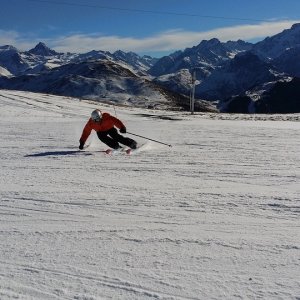
Freestyle Skiing
This relatively new style of skiing involves doing aerials, flips, and other types of maneuvers as one is working their way down the mountain. Although freestyle skiing predominately takes place within terrain parks, it has now moved outside the park onto the groomed trails and sometimes even into the backcountry. Another popular space for freestyle skiing is the halfpipe.
Cross-Country Skiing
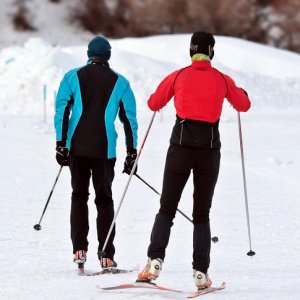
Cross-country skiing is the only type of skiing that takes place on the predominately flat ground. The skis, bindings, and boots used when cross-country skiing are particular to this style of the sport and cannot be used when downhill or backcountry skiing. The heels remain loose so that the skier can move forward across flat and uphill terrain, and the boots are softer. The poles used when cross-country skiing are also longer so that skiers can use them to propel themselves forward.
There are two main styles of cross-country skiing. The first is classic skiing, which involves moving skis forwards parallel to each other in a kick and glide fashion. Classic skiing can be done on groomed trails and on untouched snow. The other style is skate skiing, which uses shorter skis that are kicked out in a fashion that resembles ice skating. To properly skate ski specially groomed trails are required.








